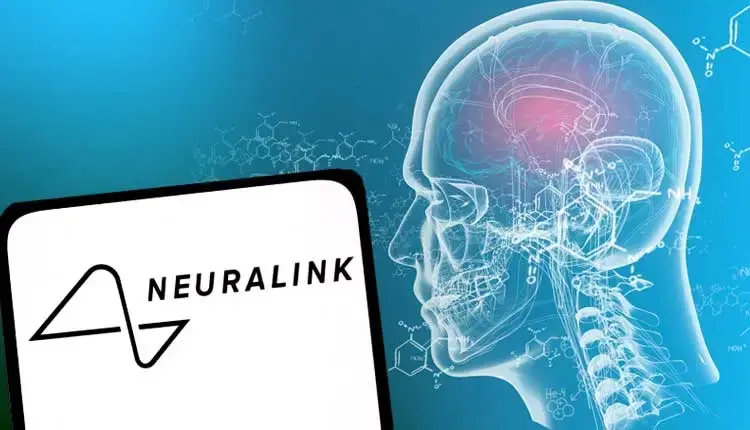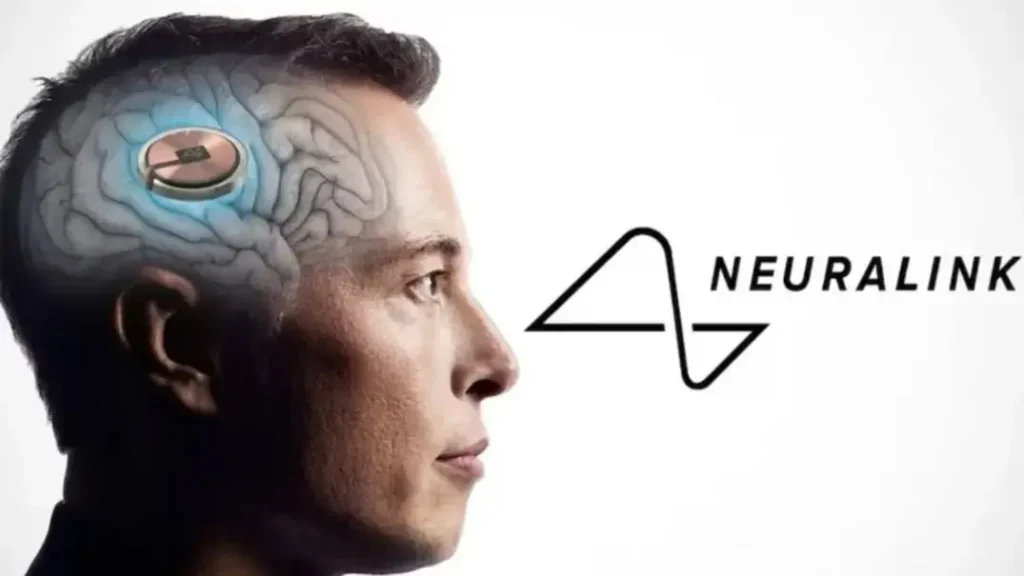In a groundbreaking advancement in the field of neurotechnology, Elon Musk’s Neuralink has achieved a major milestone with the successful implantation of the first brain-computer interface in a human. This remarkable feat has the potential to revolutionize how we understand and treat neurological disorders, paving the way for a new era in brain-computer interfaces.
Understanding brain implants and neurotechnology
Brain implants, also known as brain-computer interfaces (BCIs), are devices that establish a direct communication channel between the brain and external devices. These implants utilize tiny electrodes that are surgically implanted into the brain to record and transmit neural activity. This technology holds immense potential for understanding the complexities of the brain and developing innovative treatments for various neurological conditions.
Neuralink’s breakthrough achievement marks a significant milestone in the development of brain implants. By successfully implanting their device into a human, Neuralink has demonstrated the safety and viability of their technology. This development opens up a world of possibilities for enhancing human capabilities and improving the quality of life for individuals with neurological impairments.
The successful implantation of Neuralink’s brain-computer interface not only represents a major scientific breakthrough but also holds the potential to transform the lives of millions of people worldwide. With this technology, researchers and medical professionals can gain unprecedented insights into the workings of the brain, leading to advancements in the treatment of neurological disorders and the restoration of lost functionalities.

The significance of the first human brain implant
Neuralink’s achievement of implanting the first brain-computer interface in a human marks a significant milestone in the field of neurotechnology. The successful integration of technology with the human brain opens up a new frontier in understanding the complexities of the human mind. This breakthrough holds immense potential for advancing our understanding of the brain, as well as developing innovative treatments for a wide range of neurological conditions.
The ability to directly interface with the brain through neural implants offers unprecedented opportunities for researchers and medical professionals. By recording and decoding neural activity, scientists can gain valuable insights into how the brain processes information, learns, and controls various bodily functions. This deeper understanding of the brain’s inner workings can lead to breakthroughs in treating conditions such as paralysis, neurodegenerative diseases, and mental health disorders.
Moreover, Neuralink’s brain-computer interface has the potential to revolutionize the lives of individuals with disabilities. By restoring lost sensory or motor functions, such as sight or mobility, through the use of neural implants, Neuralink’s technology can significantly improve the quality of life for those affected by such impairments. This groundbreaking achievement paves the way for a future where individuals can regain lost functionalities and experience the world in ways they previously thought impossible.
Potential applications of Neuralink’s technology
The successful implantation of Neuralink’s brain-computer interface opens up a wide range of potential applications in the field of neurotechnology. While the technology is still in its early stages, its potential impact on various aspects of human life is vast.
One of the most promising applications of Neuralink’s technology is in the field of medical treatments. By directly interfacing with the brain, neural implants can provide real-time data on neural activity, enabling researchers and medical professionals to develop targeted therapies for neurological disorders. This could lead to more effective treatments for conditions such as Parkinson’s disease, epilepsy, and spinal cord injuries.
Another potential application is in the field of prosthetics. Neuralink’s brain-computer interface has the potential to revolutionize the way prosthetic limbs are controlled. By directly connecting the brain to an artificial limb, individuals with limb loss or limb impairment can regain fine motor control and dexterity, significantly improving their quality of life.
Furthermore, Neuralink’s technology holds promise in the field of cognitive enhancement. By augmenting the brain’s capabilities through neural implants, individuals may be able to enhance their memory, focus, and cognitive abilities. This opens up possibilities for improving learning and education, as well as enhancing professional performance in various fields.
Ethical considerations surrounding brain implants
As with any emerging technology, the integration of the human brain with external devices raises important ethical considerations. The use of brain implants brings forth questions about privacy, informed consent, and the potential for misuse.
One of the key ethical concerns revolves around the privacy and security of neural data. As brain-computer interfaces record and transmit neural activity, there is a risk of unauthorized access to this sensitive information. Safeguarding the privacy of individuals’ neural data is crucial to ensure the ethical use of this technology.
Informed consent is another ethical consideration when it comes to brain implants. As this technology advances, it is essential to ensure that individuals fully understand the risks, benefits, and potential implications of having a brain-computer interface implanted. Informed consent plays a critical role in protecting individuals’ rights and autonomy.
Additionally, the potential for misuse of brain implants raises ethical concerns. The ability to directly interface with the brain opens up possibilities for manipulating or controlling individuals’ thoughts, emotions, or actions. Safeguarding against such misuse and ensuring ethical guidelines are in place is essential for the responsible development and use of this technology.
Challenges and limitations of brain implants
While Neuralink’s breakthrough achievement is undoubtedly significant, there are still several challenges and limitations that need to be addressed before brain implants become widely accessible and practical.
One of the challenges is the invasive nature of the implantation procedure. Currently, brain implants require invasive surgery to implant the electrodes into the brain. This poses risks and complications, which need to be minimized for the widespread adoption of this technology. Developing less invasive implantation techniques and improving the safety of the procedure is an ongoing area of research.
Another challenge is the long-term stability and durability of the implants. Over time, the body’s natural response to foreign objects can lead to the degradation of the implant and a decline in its performance. Ensuring the long-term stability and functionality of brain implants is crucial for their effectiveness and reliability.
Furthermore, the decoding and interpretation of neural signals present significant challenges. Neural activity is highly complex and varies across individuals. Decoding and translating these signals into meaningful information requires advanced algorithms and machine learning techniques. Continued research and development in this area are necessary to improve the accuracy and reliability of neural interfaces.

The future of neurotechnology and its impact on society
As Neuralink’s breakthrough continues to unfold, the future of neurotechnology appears promising. The successful integration of brain implants with human beings opens up a world of possibilities for enhancing human capabilities and improving lives.
In the coming years, we can expect further advancements in neurotechnology, including improvements in the safety and effectiveness of brain implants. The development of less invasive implantation techniques, as well as advancements in materials science and biocompatibility, will contribute to the widespread adoption of this technology.
Neurotechnology has the potential to transform various industries, including healthcare, education, and entertainment. As our understanding of the brain deepens, we can develop targeted therapies for neurological disorders, revolutionize education through cognitive enhancement, and create immersive virtual reality experiences that directly interface with the brain.
However, with these advancements come important societal considerations. As neurotechnology becomes more integrated into our lives, questions about equity, access, and ethical guidelines will need to be addressed. Ensuring that neurotechnology is accessible to all and used responsibly will be crucial in harnessing its full potential for the betterment of society.
Other companies and research in the field of brain implants
While Neuralink’s breakthrough has garnered significant attention, they are not the only company working on brain implants and neurotechnology. Several other companies and research institutions are actively engaged in this field.
One notable company is Kernel, founded by Bryan Johnson. Kernel aims to develop advanced brain interfaces to improve memory, cognition, and overall human intelligence. Their research focuses on understanding the brain at a fundamental level and developing technologies that can augment its capabilities.
Another company making strides in the field of brain implants is Blackrock Microsystems. They specialize in the development of high-density neural interfaces and data acquisition systems. Their technologies enable researchers and medical professionals to record and analyze neural activity with high precision and resolution.
Additionally, academic institutions and research labs around the world are actively exploring the potential of brain implants. These institutions contribute to the collective knowledge and understanding of neurotechnology, pushing the boundaries of what is possible in this rapidly evolving field.
Implications for healthcare and medical treatments
Neuralink’s breakthrough achievement has significant implications for healthcare and medical treatments. By directly interfacing with the brain, brain implants have the potential to revolutionize the way neurological disorders are diagnosed and treated.
With the ability to record and interpret neural activity in real-time, brain implants can provide valuable insights into the progression of neurological conditions. This can lead to earlier diagnosis and intervention, improving outcomes for patients. Additionally, brain implants can be utilized to develop personalized treatment approaches, tailored to an individual’s unique neural patterns and responses.
Moreover, brain implants offer the potential for targeted therapies. By directly stimulating specific regions of the brain, researchers and medical professionals can potentially alleviate symptoms and improve the quality of life for individuals with situs slot. This targeted approach has the potential to be more effective and precise compared to traditional treatments.
As neurotechnology continues to advance, we can expect further innovations in healthcare and medical treatments. The integration of artificial intelligence and machine learning algorithms with brain implants holds promise for developing adaptive therapies that can continuously adjust and optimize treatment strategies based on an individual’s neural activity.
The promise and potential of Neuralink’s breakthrough
The successful implantation of the first brain-computer interface in a human by Neuralink represents a significant milestone in the field of neurotechnology. This breakthrough holds immense promise for advancing our understanding of the brain, developing innovative treatments for neurological disorders, and enhancing human capabilities.
With bandar slot online cutting-edge technology, the potential applications are vast. From restoring lost sensory or motor functions to improving cognitive abilities, the possibilities for enhancing human lives are awe-inspiring. However, as with any emerging technology, ethical considerations, challenges, and limitations must be carefully addressed to ensure the responsible development and use of brain implants.
As we enter a new era in neurotechnology, the integration of the human brain with external devices opens up possibilities previously unimaginable. With continued research, collaboration, and responsible innovation, we can unlock the full potential of brain implants, paving the way for a future where neurological disorders can be effectively treated, lost functionalities can be restored, and human capabilities can be enhanced beyond our current limitations. The dawn of a new era in neurotechnology is upon us, and the possibilities are both exciting and humbling.
Read also: Sneakers Modern Teknologi 2024: Membongkar Inovasi di Balik Perkembangan




